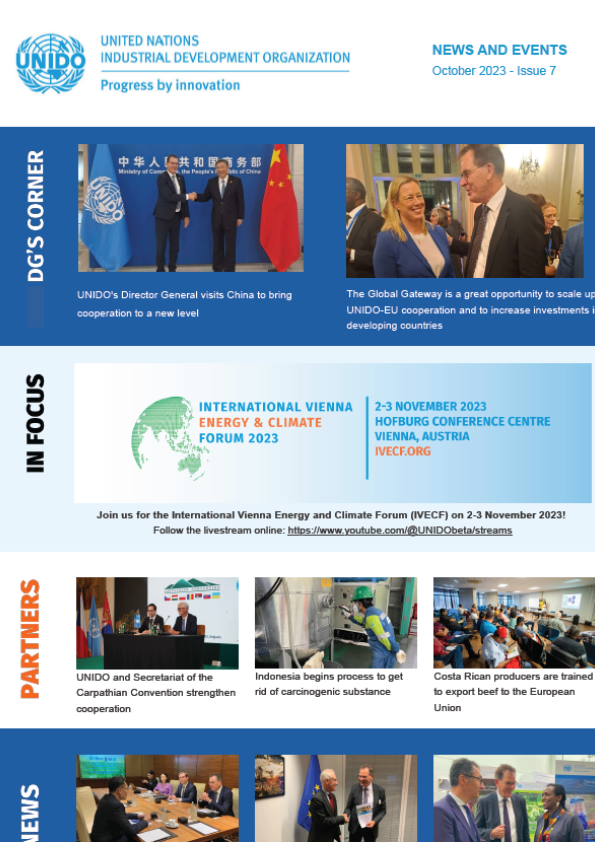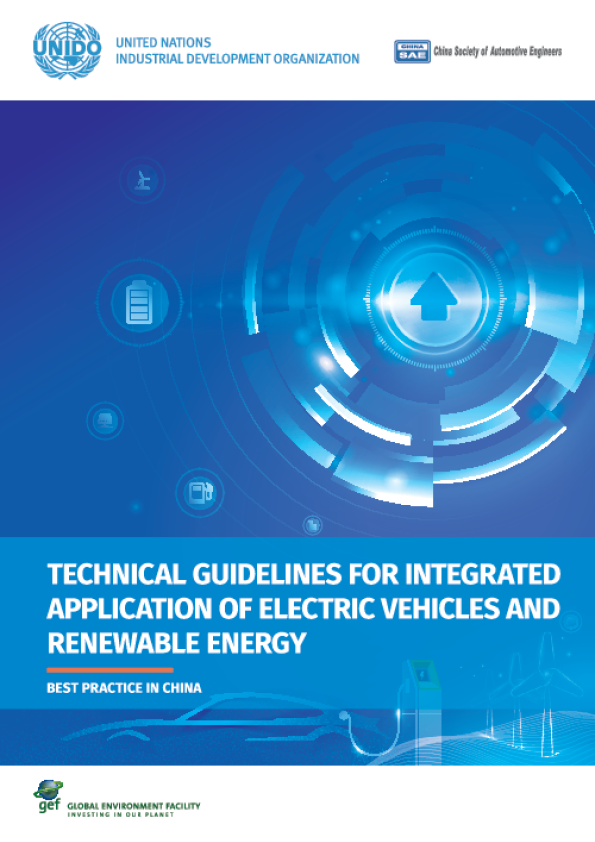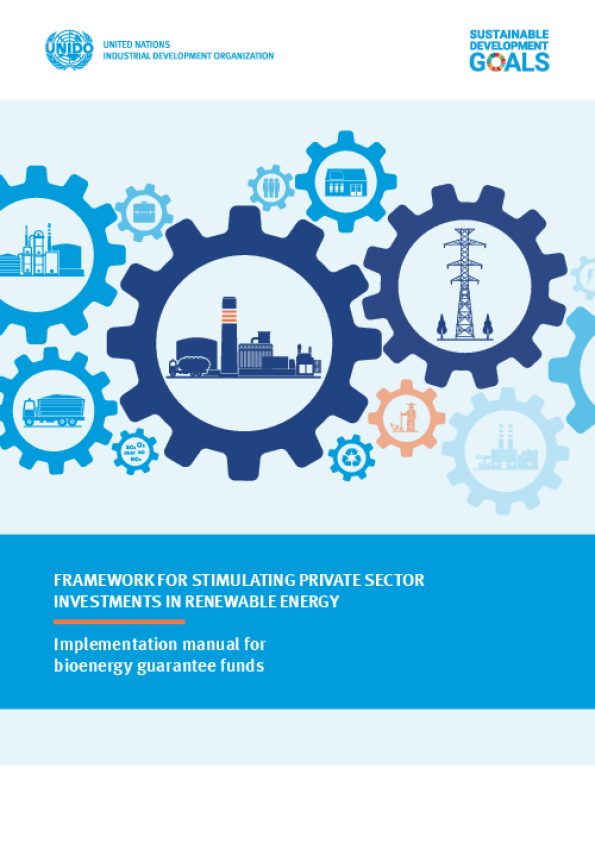UNIDO Publications
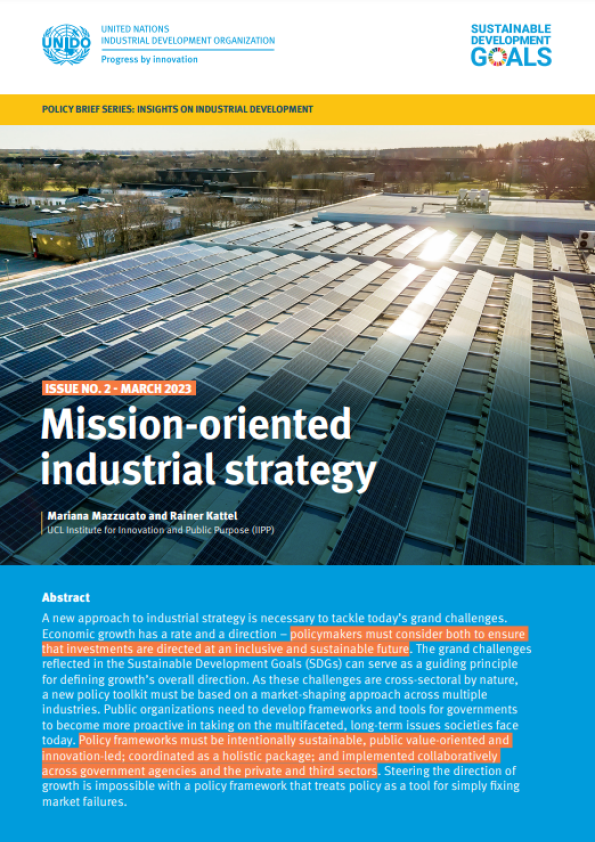
IID Policy Brief 2: Mission-oriented industrial strategy
2023 | Author(s): M. Mazzucato and R. Kattel
#Policy Brief
A new approach to industrial strategy is necessary to tackle today’s grand challenges.
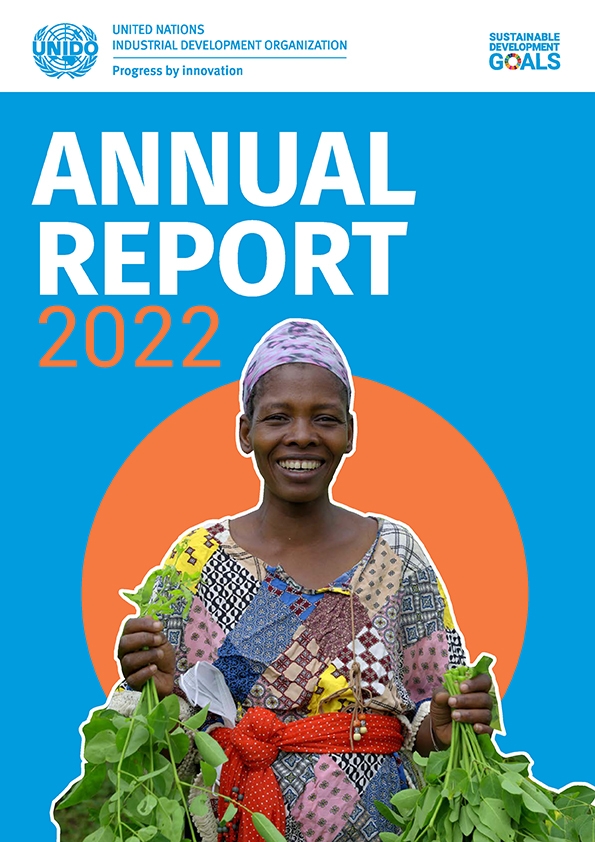
Agriculture Systems Transformation Accelerator (ASTA)
2023 | Author(s): UNIDO, FAO
#Agribusiness development #Food security
ASTA is a global programme – co-led by UNIDO and FAO – that works with countries to transform their agrifood systems.
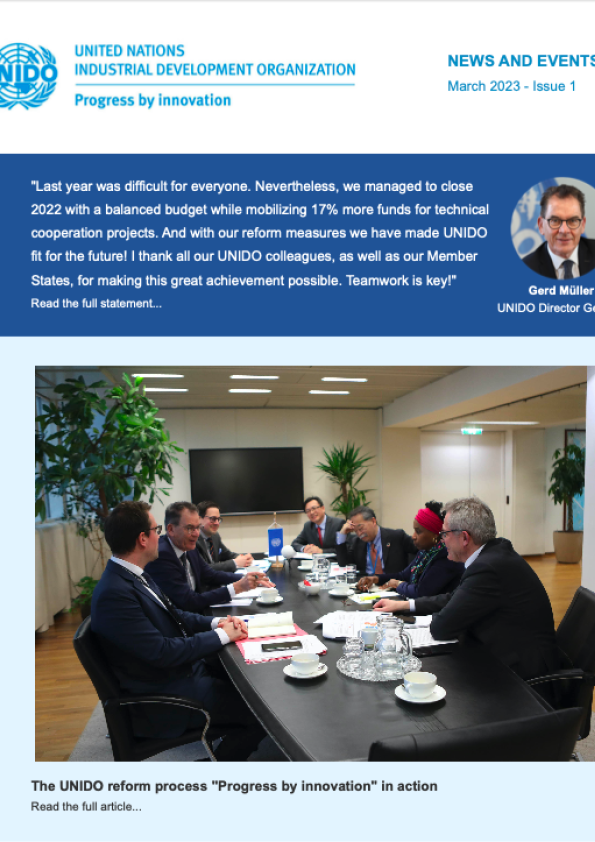
2023 | Author(s): UNIDO
#Newsletter
The UNIDO reform process "Progress by innovation" in action
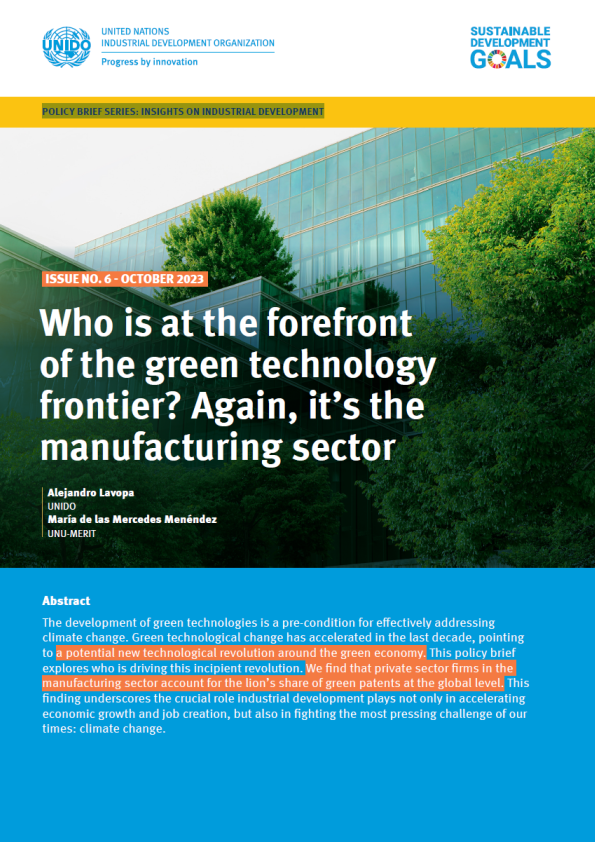
IID Policy Brief 6: Who is at the forefront of the green technology frontier?
2023 | Author(s): A. Lavopa and M. de las Mercedes Menéndez
#Policy Brief
The development of green technologies is a pre-condition for effectively addressing
climate change. Green technological change has accelerated in the last decade, pointing
to a potential new technological revolution around the green economy. This policy brief
explores who is driving this incipient revolution.
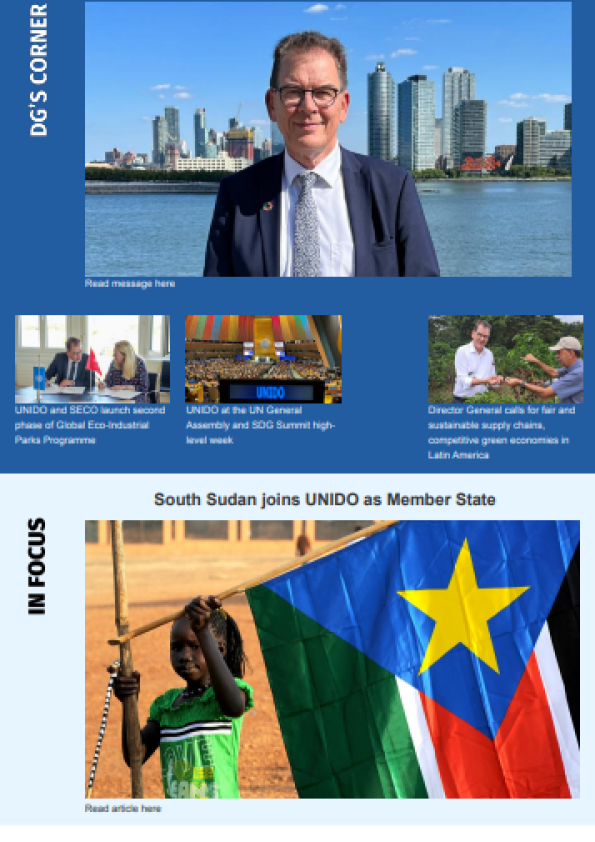
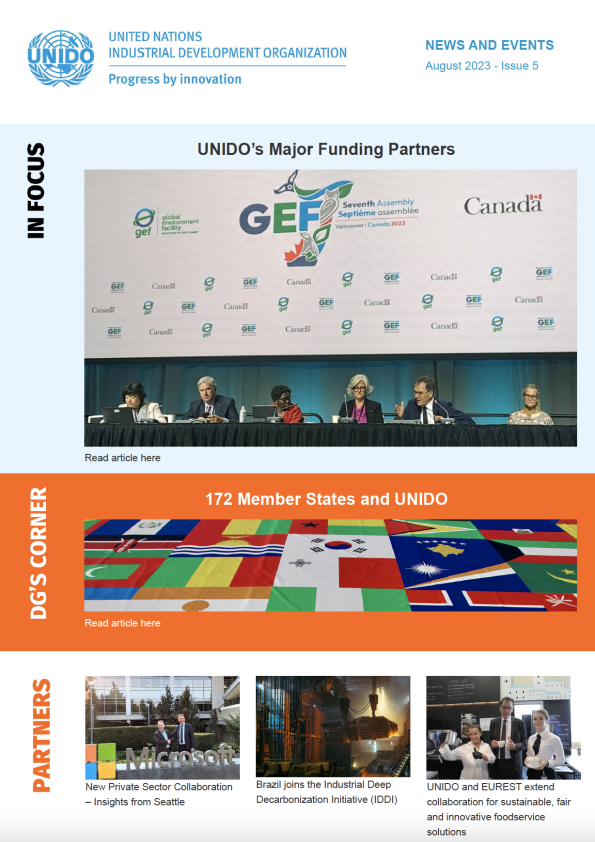
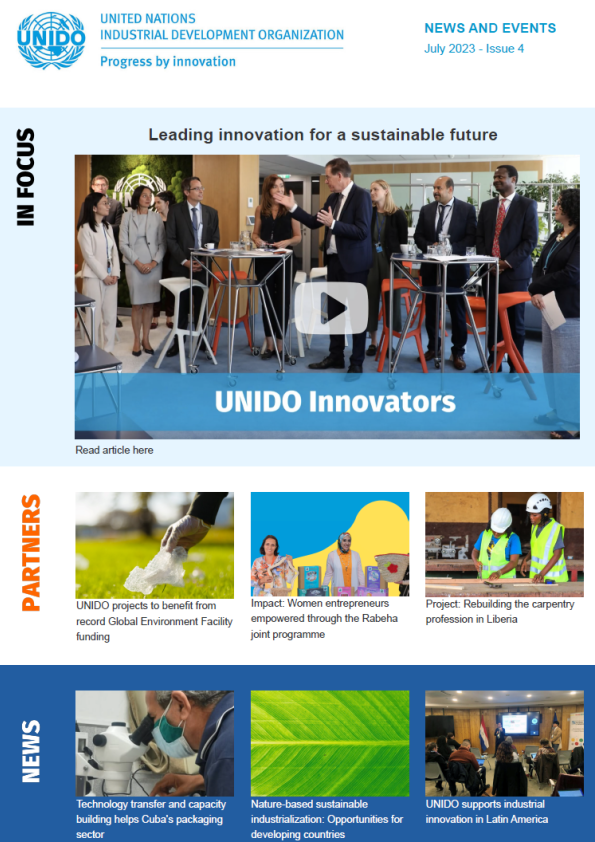
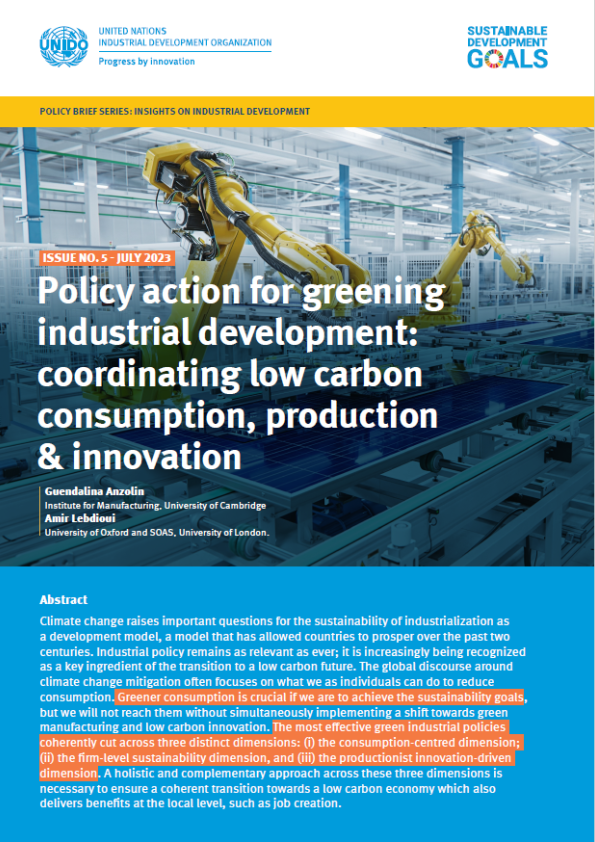
IID Policy Brief 5: Greening industrial development
2023 | Author(s): G. Anzolin and A. Lebdioui
#Policy Brief
Climate change raises important questions for the sustainability of industrialization as a development model, a model that has allowed countries to prosper over the past two centuries. Industrial policy is increasingly being recognized as a key ingredient of the transition to a low carbon future. Greener consumption is crucial if we are to achieve the sustainability goals.
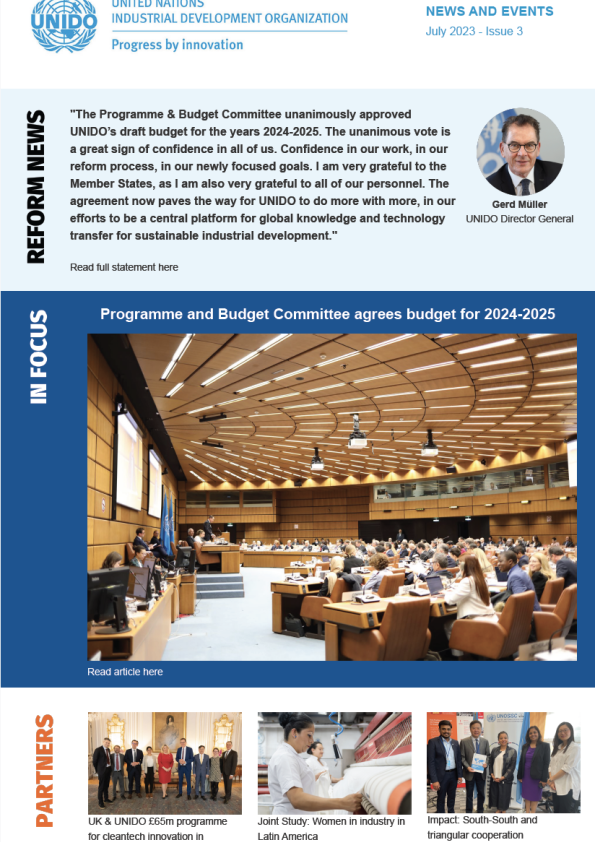
2023 | Author(s): UNIDO
#Newsletter
Progress by innovation – UNIDO pioneers modern personnel policies
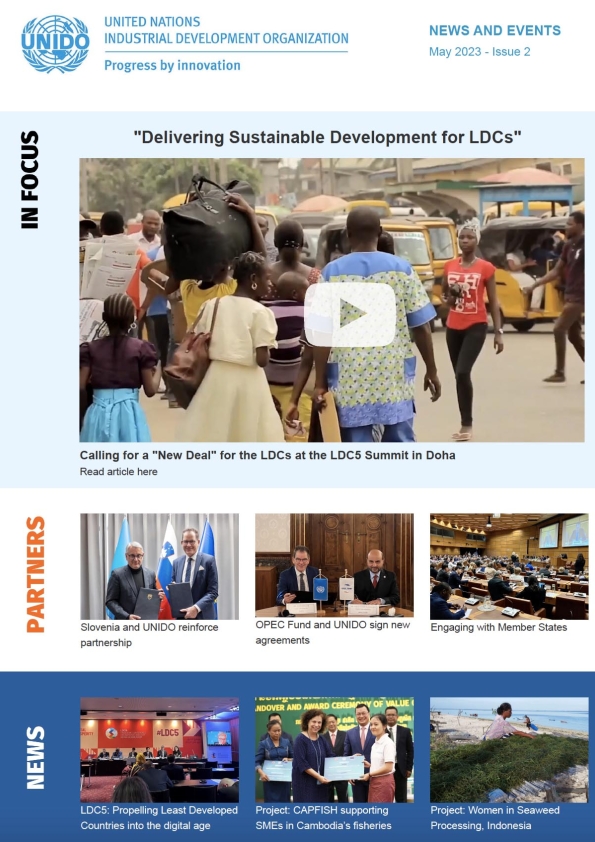

IID Policy Brief 4: Aligning digital and industrial policy
2023 | Author(s): C. Foster and S. Azmeh
#Policy Brief
Digital technologies are driving industrial transformation, with impacts across a range of
sectors of production. This includes potential shifts in the geography of global production
with implications for industrial development. Novel approaches to industrial policy are
necessary to embrace and take advantage of these changes.
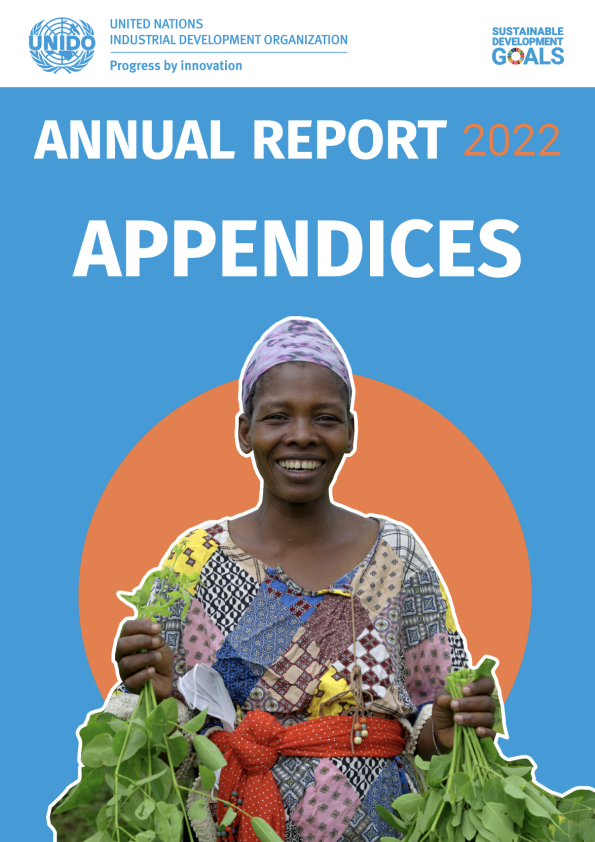
Circular Economy and Biodiversity
2022 | Author(s): UNIDO
#GACERE #Circular economy
The document offers key facts and figures on the biodiversity loss, and illustrates its impacts on the environment, on people and on our economies. It describes how circular economy can address the drivers of biodiversity loss and increase positive impacts on nature.
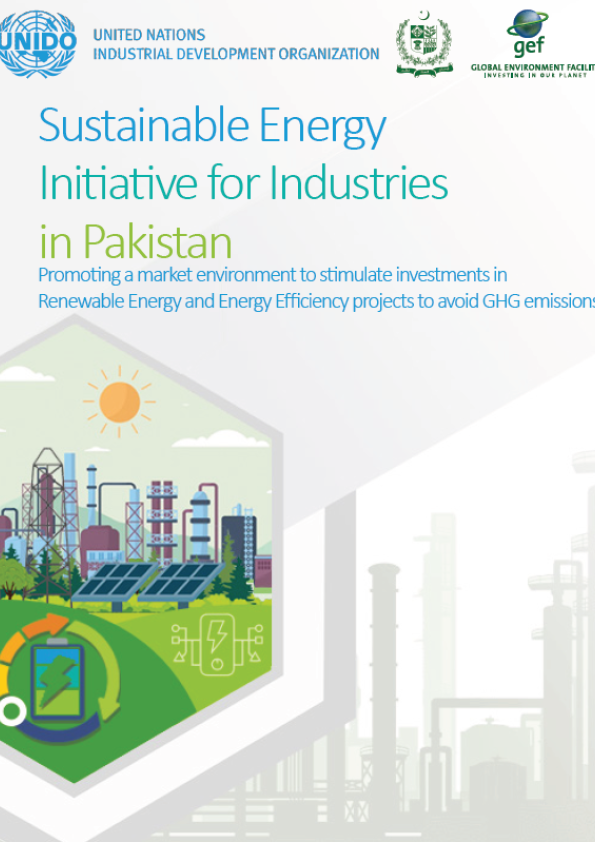
Sustainable Energy Initiative for Industries in Pakistan
2022 | Author(s): UNIDO
#Publications
Sustainable Energy Initiative for Industries in Pakistan, also known as the Renewable Energy and Energy Efficiency (REEE) project, is funded by the GEF and implemented by UNIDO with the aim to avoid greenhouse gas (GHG) emissions by developing and promoting a market environment to stimulate investments in renewable energy and energy efficiency in industries which, in order to support Inclusive and Sustainable industrial development in Pakistan.


